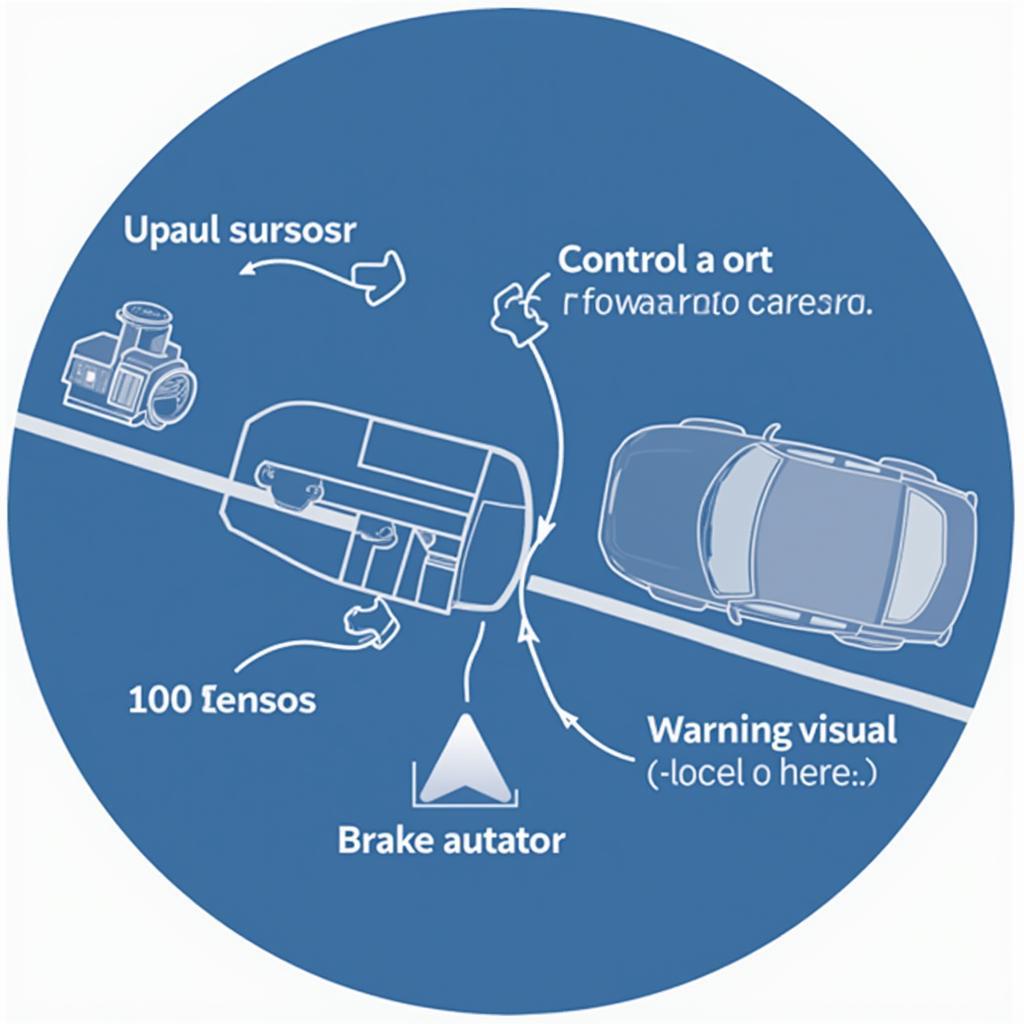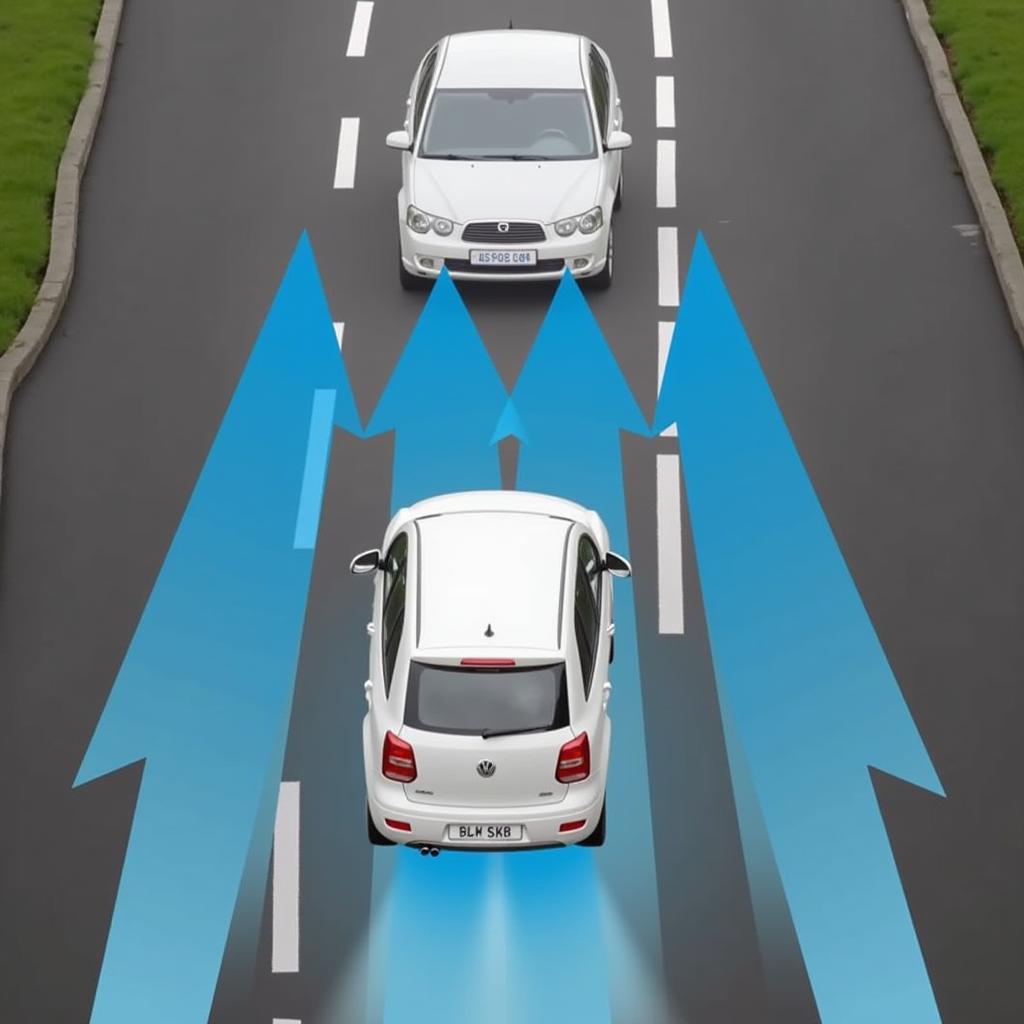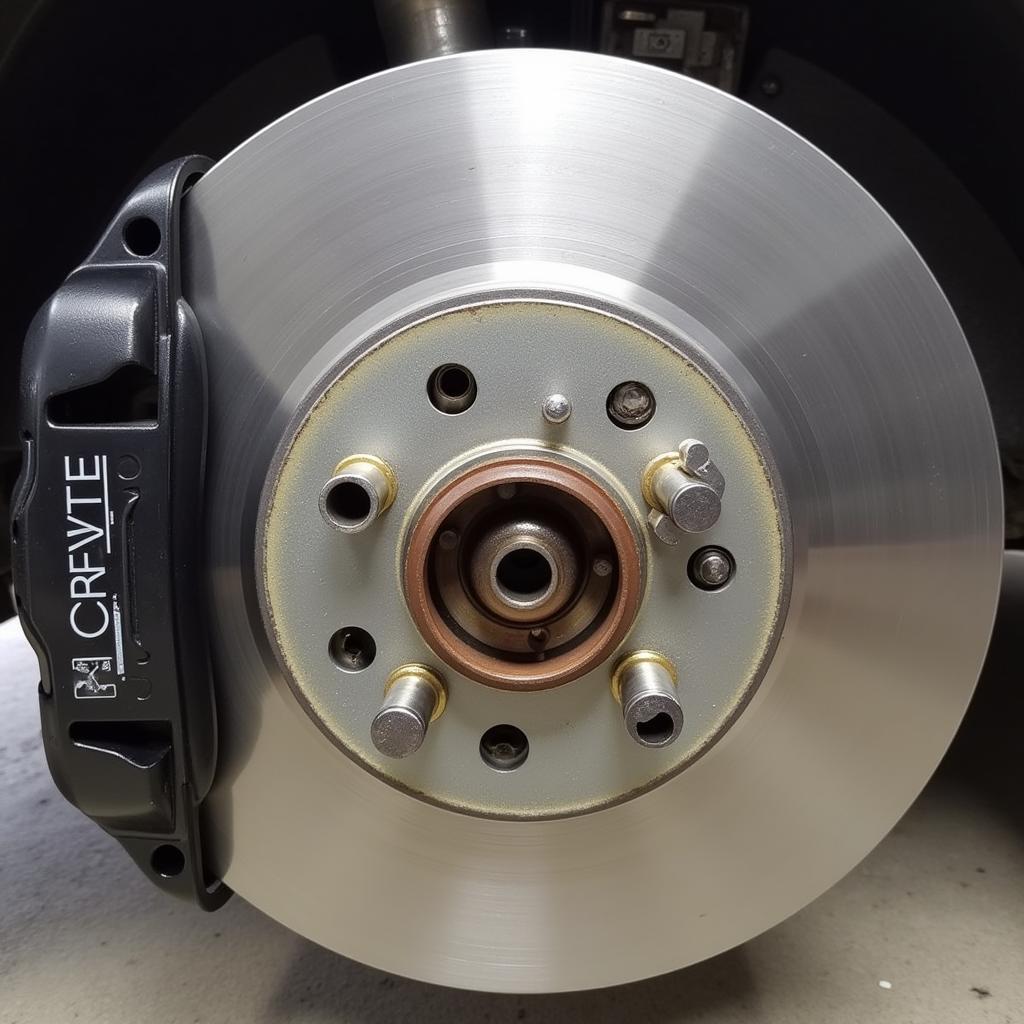The forward collision warning with brake assistance system is an advanced safety feature designed to help prevent or mitigate the severity of front-end collisions. Using sensors, typically radar or cameras, this system monitors the distance and closing speed between your vehicle and the one in front of you. When a potential collision is detected, the system issues a warning, often audible and visual, to alert the driver. If the driver fails to react in time or brakes insufficiently, the brake assistance system automatically applies the brakes to avoid or lessen the impact of a collision.
How Does Forward Collision Warning with Brake Assistance Work?
 Forward Collision Warning System Components
Forward Collision Warning System Components
The system relies on a complex network of components working together to identify potential collisions and provide timely warnings and assistance:
- Sensors: The system primarily utilizes radar or camera sensors, typically mounted behind the front grille or windshield, to continuously scan the road ahead and monitor the distance, speed, and trajectory of vehicles in your lane.
- Control Unit: This unit processes the data received from the sensors in real-time, analyzing the collected information to determine the likelihood of a collision based on pre-set parameters like distance, closing speed, and driver behavior.
- Warning System: When a potential collision is detected, the system activates various alerts to warn the driver. These warnings are designed to be immediate and attention-grabbing, often including:
- Audible Alerts: Beeps, chimes, or warning sounds through the vehicle’s speakers.
- Visual Alerts: Flashing icons or messages on the dashboard display, heads-up display (HUD), or even projected onto the windshield in some vehicles.
- Brake Assistance: If the driver doesn’t react promptly or adequately to the warnings, the brake assistance system kicks in. This system can:
- Pre-charge Brakes: The system prepares the braking system by pre-filling the brake lines with fluid, reducing the response time for full braking force.
- Brake Assist: It supplements the driver’s braking effort by automatically applying additional braking pressure, even if the driver panics and doesn’t press the brake pedal hard enough.
- Autonomous Emergency Braking (AEB): In some advanced systems, if the driver fails to react at all, the system can initiate full braking automatically to help prevent or minimize the impact of the collision.
Benefits of Forward Collision Warning with Brake Assistance
 Car Avoiding Collision Thanks to Brake Assist
Car Avoiding Collision Thanks to Brake Assist
This safety feature offers numerous advantages, significantly contributing to road safety and driver peace of mind:
- Reduced Accident Rates: By providing timely warnings and assisting with braking, the system helps drivers avoid or mitigate collisions, leading to a decrease in accident frequency and severity.
- Mitigating Collision Impact: Even if a collision is unavoidable, the system can significantly reduce the impact force by slowing the vehicle down, minimizing potential injuries to occupants of both vehicles involved.
- Enhanced Driver Awareness: The system promotes safer driving habits by encouraging drivers to maintain a safe following distance and be more aware of their surroundings.
- Peace of Mind: Driving with this safety feature provides drivers with a sense of security, knowing they have an extra layer of protection on the road, especially in challenging driving conditions or unexpected situations.
Common Issues and Troubleshooting
While this system is generally reliable, occasional issues might arise. Here’s a quick troubleshooting guide:
- System Malfunction Warnings: If you see a warning message on your dashboard indicating a system malfunction, it’s crucial to consult your vehicle’s owner’s manual or contact a qualified technician for diagnosis and repair.
- False Warnings: Though rare, the system might issue false warnings due to factors like extreme weather conditions, reflections, or obstructions near the sensors. If false warnings persist, a system check is recommended.
- System Deactivation: The system can often be temporarily deactivated using a button on the dashboard. Ensure it’s turned on and functioning correctly. Refer to your owner’s manual for specific instructions.
“It’s important to remember that forward collision warning with brake assistance is a supplementary safety feature, not a substitute for attentive driving,” says Mark Stevenson, a senior automotive safety engineer at a leading car manufacturer. “Drivers should always remain vigilant and responsible for their actions behind the wheel.”
Frequently Asked Questions
1. Can I turn off the forward collision warning with brake assistance system?
Yes, most vehicles allow you to temporarily disable the system via a button on the dashboard. However, it’s highly recommended to keep it activated for your safety.
2. Does the system work at all speeds?
While the operational speed range varies depending on the specific system and vehicle model, most systems are active at higher speeds, typically above a certain threshold, for instance, 10 mph or higher.
3. Will the system always prevent a collision?
No, the system is designed to assist the driver and reduce the severity of a collision but cannot guarantee complete collision avoidance in every situation. Factors such as road conditions, vehicle speed, and driver reaction time all play a role.
4. What is the difference between brake assist and autonomous emergency braking?
Brake assist supplements the driver’s braking effort, while autonomous emergency braking can automatically apply full braking force if the driver fails to react to a potential collision.
5. Do I need to do anything special to maintain the system?
Regular vehicle maintenance, including checks on the braking system and sensors, is crucial for optimal performance. Consult your owner’s manual for specific maintenance recommendations.
Conclusion
Forward collision warning with brake assistance is a vital safety feature that can significantly reduce the risk of front-end collisions. Understanding how this system works, its benefits, and potential issues can help drivers utilize it effectively and stay safe on the road. Remember, while these advanced systems enhance safety, they should never replace attentive driving and responsible behavior behind the wheel.

